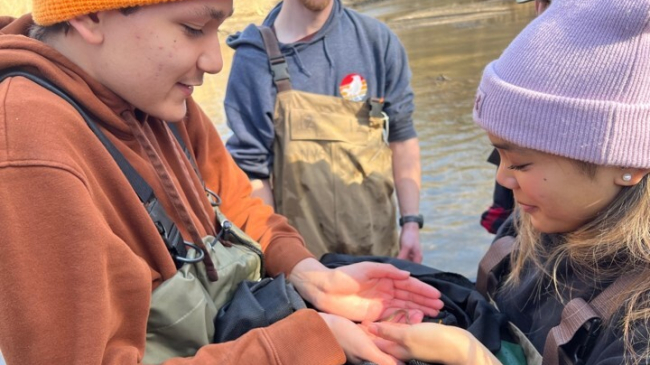Today, the National Science and Technology Council’s Committee on STEM Education (CoSTEM) and the White House Office of Science and Technology Policy released the report, "Charting a Course for Success: America's Strategy for STEM Education." Developed with input from education experts around the country, the document outlines a strategy for federal science agencies to ensure that people from all backgrounds are STEM-literate and workforce-ready.
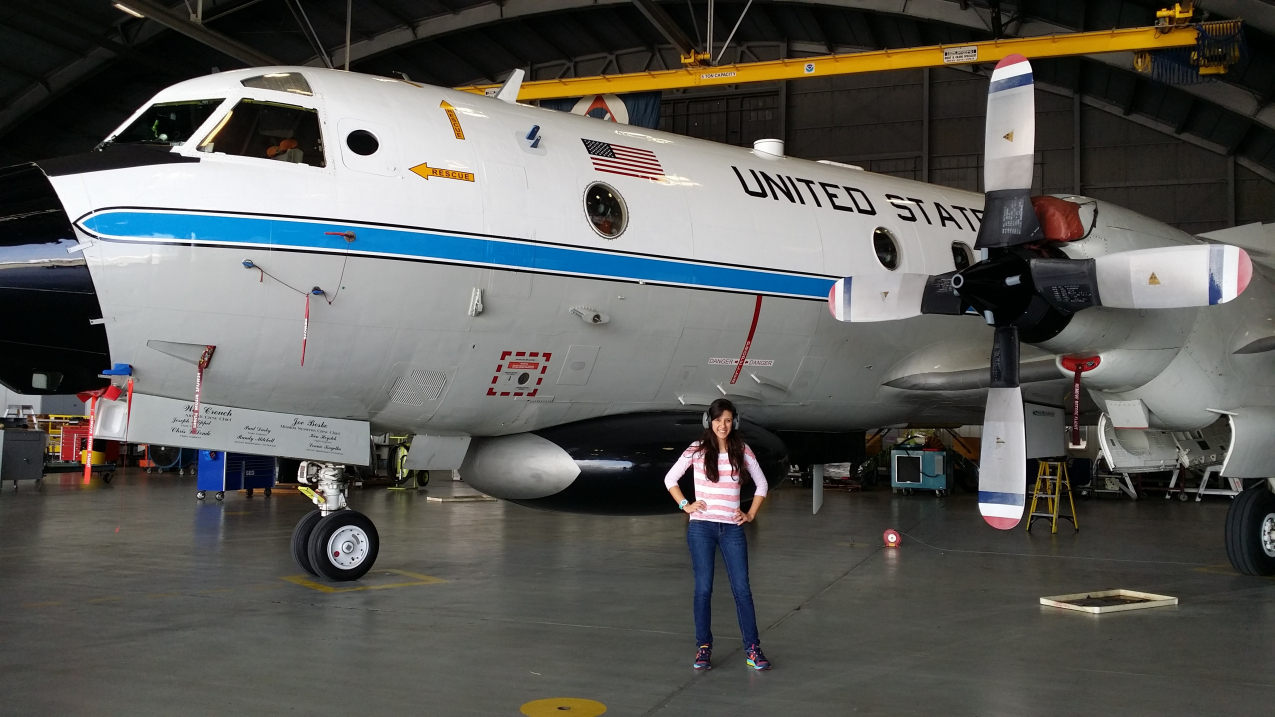
EPP/MSI Undergraduate Scholar Kelly Nunez with NOAA Hurricane Hunter plane during her summer internship. (Image credit: Kelly Nunez)
NOAA has an important role to play in making this vision a reality. “Our education efforts connect to the plan’s priorities, and we are delighted to apply our significant resources to educate and inspire students,” said Louisa Koch, Director of NOAA Education. “After all, today’s learners will be the ones launching satellites into space, exploring the ocean with unmanned submersibles, and predicting the paths of landfalling hurricanes."
NOAA made the following contributions to America's Strategy for STEM Education:
1. Expanding digital platforms to bring the ocean to the classroom
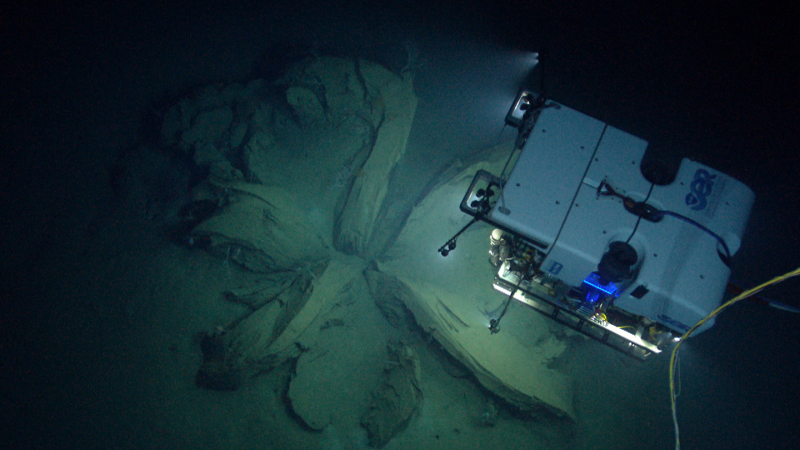
The deep ocean remains one of the least-explored places on our planet. But thanks to technological innovations, it is now accessible, not just to researchers, but to hundreds of thousands of viewers around the globe. Watching NOAA Ship Okeanos Explorer’s real-time, ship-to-shore interactions and live video feed encourages global participation ocean exploration and inspires ocean literacy. NOAA’s unique role in exploring and mapping the ocean provides unparalleled opportunities to bring the excitement of discovery into classrooms, informal education institutions, and on to any computer screen or mobile device. NOAA plans to provide more than 80 live interactions in 2019. These expeditions will also underpin professional development workshops, helping around 700 teachers bring STEM-based ocean exploration lessons to K-12 classrooms.
Federal agency partners that join these expeditions include U.S. Geological Survey, Bureau of Ocean Energy Management (BOEM), U.S. Naval Academy, U.S. Coast Guard Academy, the Office of Naval Research, and NASA. The data and technologies developed and applied in these efforts are shared with and directly benefits the Departments of Education, Health and Human Services, Transportation, Energy, Agriculture, Interior, and Defense.
2. Building STEM connections through national marine sanctuaries
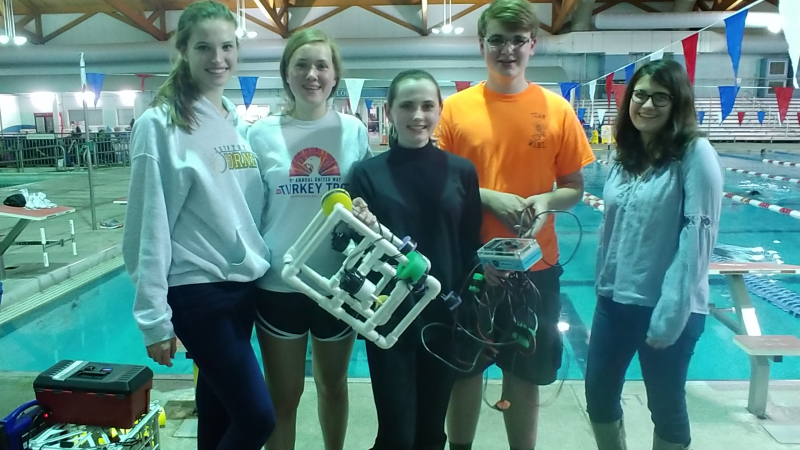
The National Marine Sanctuaries Program is a network of 13 underwater national marine sanctuaries and two national marine monuments encompassing more than 600,000 square miles of marine and Great Lakes waters. Our sanctuaries in Michigan, Washington, and Georgia work with Marine Advanced Technology Education (MATE) Center offsite link on unmanned autonomous vehicle (UAV) and remotely operated vehicle (ROV) education. Through workshops and competitions, more than 800 students will build their engineering skills and become entrepreneurs as they transform their teams into ROV companies that manufacture, market, and sell “products.”
Three national marine sanctuaries in California will partner to provide a youth-based citizen science program called Long-term Monitoring Program and Experiential Training for Students offsite link (LiMPETS) to reach over 6,000 students, teachers, and volunteers to collect data. NOAA will develop digital platforms to make the data publicly available and provide accompanying lesson plans to teachers.
3. Supporting authentic learning experiences
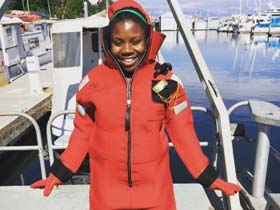
NOAA will offer over 200 internships, scholarships and other experiential training opportunities for post-secondary students in 2019. NOAA-supported scholars, interns, and fellows use cutting-edge technologies to investigate real world problems, developing skills that will carry them into successful STEM careers.
- Hollings Scholarship Program provides academic support and internships to undergraduate students in NOAA sciences. The application deadline for this opportunity is January 31, 2019.
- Educational Partnership Program with Minority Serving Institutions (MSI) Undergraduate Scholarship provides academic support and internships to undergraduates in NOAA sciences from MSI. The application deadline for this opportunity is January 31, 2019.
- Dr. Nancy Foster Scholarship provides academic support and hands-on experience to graduate students with a focus on increasing representation in fields related to national marine sanctuaries, particularly by female and minority students. The application deadline for this opportunity is December 17, 2019.
- Sea Grant Knauss Marine Policy Fellowship provides graduate students year-long work experiences in a federal agency or the legislative branch. This opportunity will be open in early 2019.
4. Engaging students with transdisciplinary challenges
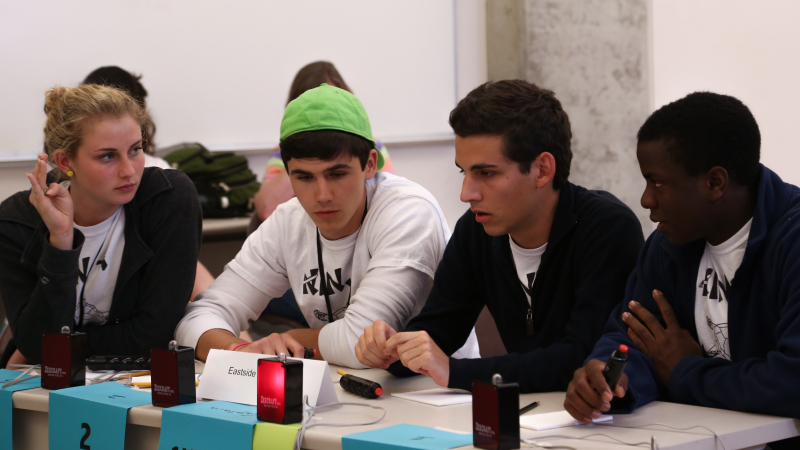
The National Ocean Sciences Bowl offsite link (NOSB) is an academic competition that addresses a national gap in environmental and Earth sciences education by engaging high school students in ocean science. Through this competition, high school students will increase their knowledge of the ocean around a transdisciplinary theme, which integrates disciplines of technology, biology, chemistry, physics, and geology. NOAA, NASA and BOEM will partner with the Consortium for Ocean Leadership to run the program. The NOSB will engage 1,500 students from more than 200 high schools. Over 100 students, representing the top team from each region, will advance to the national competition in Washington, D.C., planned for April 2019.



